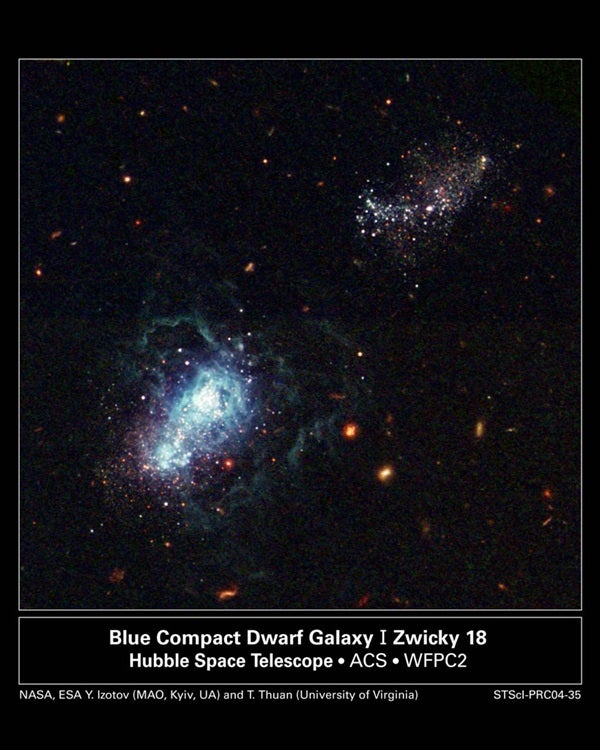“Dwarf galaxy I Zw 18 is the least abundant in metals — in astrophysics, elements heavier than hydrogen and helium — in the nearby universe and one of the most akin to the primeval galaxies. Its study therefore allows us to catch glimpses of the conditions that prevailed in the primordial universe,” said Carolina Kehrig from the Institute of Astrophysics of Andalusia.
The study has found a large region in this small galaxy of ionized helium, which tends to be more frequent in distant galaxies with low presence of metals. The ionization of helium implies the presence of objects emitting a radiation intense enough to knock electrons off the helium atoms. “In this study, we propose a new interpretation of the origin of this radiation in galaxy I Zw 18, a subject that is still enigmatic,” Kehrig said.
Using the PMAS integral field spectrograph of the 3.5-meter telescope at the Calar Alto Observatory (CAHA), researchers have obtained the first detailed map of this region of I Zw 18 and have analyzed possible ionizing sources.
Conventional sources of ionization, such as Wolf-Rayet stars — massive and with violent stellar winds — or shocks generated by remnants of supernovae, cannot provide the energy necessary to explain the halo of ionized helium present on I Zw 18, so researchers considered other possibilities.
“Our data point to the fact that extremely hot stars, such as supermassive stars with low metal content or massive stars practically devoid of metals may hold the key to the enigma of the excitement of helium on I Zw 18, even though the existence of these stars has not yet been confirmed by observations on any galaxy,” said Carolina Kehrig from IAA-CSIC.
We would be talking about hot stars analogous to first generation stars — known as Population III star — which according to theoretical models, would be composed only of hydrogen and helium and could be hundreds of times more massive than the Sun. These stars are believed to have played a decisive role in the “reionization” of the universe, during which period the first stars and galaxies became visible and which is still little known.
This study shows how it is possible to extract information about the history of the universe within our own galactic vicinity.










